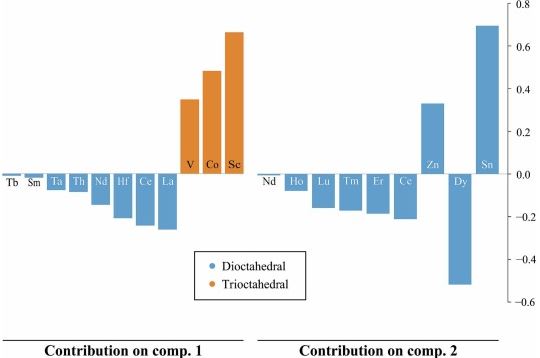
Adrián Lorenzo (et al.)-
This work focuses on the study of the trace elements allocation in smectites throughout the statistical analysis of geochemical data corresponding to a very wide group of pure or almost bentonite samples. Data of trace elements contents corresponding to both analysed samples and bibliographic references were treated with different statistical analysis such as Partial Least Squares Discriminant Analysis (PLS-DA), Wilcoxon-Mann-Whitney rank sum test (WMW test). A clear relationship between trace elements and smectite crystallochemistry was evidenced from the PLS-DA results because the contents in certain the trace element separated the dioctahedral smectites from the trioctahedral smectites. In addition, the WMW test indicated that dioctahedral smectites preferentially accumulate Er, Eu, Gd, Sm, Tb, Nd, Ga, Dy, Ho, Tm, Be, Y, Yb, La, Pb, Ce, Lu, Pr, Hf, Bi, Zr, Zn, Nb, In, Th, Ta, Sn, and Ge, while trioctahedral smectites preferentially accumulate As. Complementary analysis by X-Ray Micro-Fluorescence and a study after homoionization were done to help to discuss these results. According to these results, the presence of these elements as interlayer cations or their adsorption at layer edges has been excluded. In addition, external factors such as impurities and the geological origin of bentonites have been discussed and ruled out as influencing factors that could invalidate the obtained results. An evaluation of atomic parameters for trace elements indicates that As, with an effective cationic radius of 33.5 pm for coordination number CN = 4, can be allocated in tetrahedral positions, whereas the remaining elements can occupy octahedral positions.
